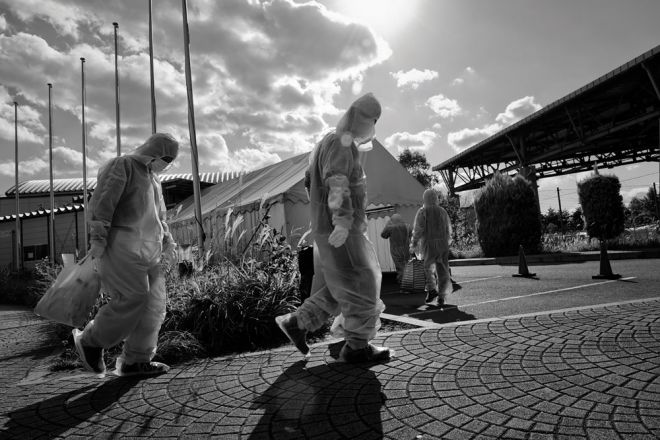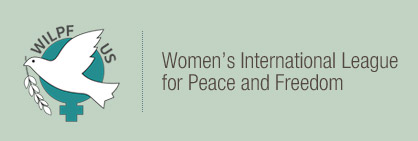Forgotten Fukushima
Published on March, 39 2019
Workers coming back from their shift at the Fukushima Daiichi nuclear power plant, J Village, Naraha. Photo credit: Pierpaolo Mittica
By Linda Cataldo Modica
March 11, 2019 will mark the eighth year since the beginning of the nuclear power disaster in Fukushima, Japan. Yet, even an anti-nuclear activist like me has forgotten Fukushima. And I’m ashamed.
I had forgotten the tens of thousands of people who had to abandon their homes, farms, and businesses because of the triple meltdown at the Fukushima Daichi nuclear power plant. Even though March 11th is just around the corner, I was thinking more about Spring than about the hydrogen gas explosions that spewed radioactive debris into the air and onto the land. I had even forgotten about the children who had developed thyroid nodules soon after the meltdowns. They’re teenagers now. Are they still cancer free? Are they still being monitored?
And what about the families who are still displaced? And the poor workers who were subjected to intense radiation at the onset of the disaster and who are still risking their lives in the effort to keep as much radiation contained at the damaged plant as possible? Are they OK? Did they receive the protection from radiation exposure that they needed?
To assuage my guilt, I have done two things. First, I invited Mary Olson of the Nuclear Information and Resource Service (NIRS) Southeast Office to speak at an Appalachian Peace Education Center meeting on March 21st. Because her expertise is on the disproportionate impact of radiation on women and girls, I’ve asked her to discuss “The Forgotten Women & Children of Fukushima.”
My next action was to see if I could answer any of my own questions. Unfortunately, some of the answers are unsettling, if not downright upsetting.
Do the Japanese people trust the government or the industry to tell them the truth about the radiation exposures they might suffer if they moved back into the exclusion zones? Answer: NO.
Even though 12% of Fukushima Prefecture was evacuated and the displaced are allowed back into ¾ of the former exclusion zone, do all former residents trust that their land and water are now safe for their families? Answer: NO.
When the meltdowns and hydrogen explosions made it clear that the situation was life threatening, did the owner of the nuclear power plants tell the public how serious their risks were? Answer: NO.
Did radiation exposure from the Fukushima Daichi disaster kill anyone? Answer: YES. The Japanese government has only recently admitted that one worker who died from lung cancer suffered an occupational exposure and that his cancer was caused by radiation released by the disaster.
Did the evacuation itself and the displacement of thousands who were forced to live in shelters for years cause any deaths? Answer: YES. The nuclear industry estimates that 1,000 people died after the evacuation, but others place the death toll at over 3,700.
These deaths were attributed to the manmade nuclear disaster and not the tsunami. As for the death of the land in the 3% of Fukushima Prefecture that is off-limits to people, radioactive wild boars now roam the ghost towns. Read Helen Jaccard’s extensive account “Fukushima Stories and the Ghost Towns Left Behind” on pp. 12-13 in Peace & Freedom, Spring/Summer 2018.
Can we stop this dangerous and deadly industry from killing more people? Answer: YES—by working to End the Whole Nuclear Era with WILPF’s Disarm Committee, and by remembering Fukushima.



